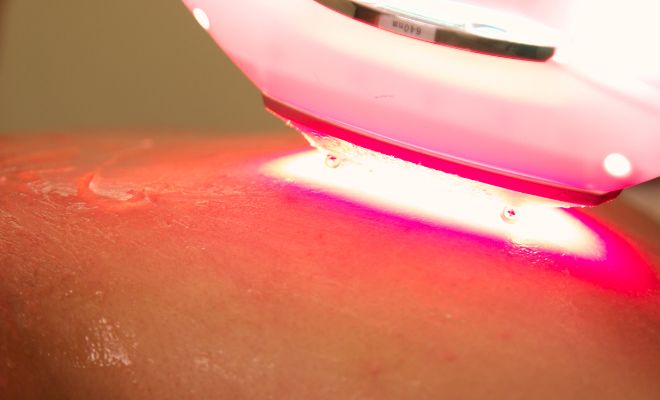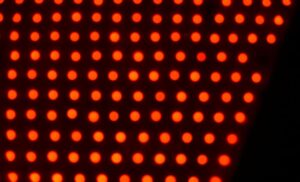Key Takeaways
Red light therapy (RLT) uses specific red and near-infrared wavelengths to promote healing, reduce inflammation, and support cellular health.
Direct research on pregnancy safety is lacking, but no known harmful effects have been documented when used away from the abdomen.
Potential pregnancy-related benefits may include relief from back pain, swelling, leg cramps, mood changes, and sleep issues.
The growing popularity of non-invasive treatments has created new opportunities to manage pain, stress, and fatigue, especially for those looking to avoid medications. One prominent option is red light therapy (RLT), a low-level light therapy that uses specific wavelengths of red and near-infrared light to stimulate healing, improve circulation, and enhance overall well-being at the cellular level.
For pregnant women, the demand for safe, non-invasive treatments is higher than ever. Common health Symptoms such as back pain, leg swelling, sleep disruption, and hormonal changes often prompt expectant mothers to explore red light therapy (RLT). Many wonder is red light therapy safe during pregnancy and what potential benefits it may provide for skin health, muscle relief, and overall maternal well-being.
In this article, we’ll explore what the current science says, what experts recommend, and how pregnant women can use RLT safely, if at all.
What Is Red Light Therapy?

Red light therapy (RLT), also called low-level light therapy (LLLT) or photobiomodulation, delivers a specific low-wavelength range of red light (620–660 nm) and near-infrared light (810–850 nm) to target cells at a cellular level. This non-invasive treatment can support skin rejuvenation, wound healing, collagen production, and pain relief, making it a popular option for expectant mothers seeking safe maternal care solutions.
How It Works:
- These wavelengths penetrate the skin and reach mitochondria, the energy-producing parts of your cells.
- This stimulates ATP (adenosine triphosphate) production, which fuels healing and regeneration.
- The light also reduces oxidative stress and inflammation, supporting faster recovery and tissue repair.
Common Uses:
- Joint and muscle pain relief
- Wound healing and scar reduction
- Improved circulation
- Skin rejuvenation (acne, wrinkles, etc.)
- Mood and energy balance
Because it’s non-invasive and painless, red light therapy is available in spas, physical therapy clinics, dermatology offices, and increasingly through home-use devices.
Is Red Light Therapy Safe During Pregnancy?
At present, there’s no definitive scientific proof that red light therapy is harmful during pregnancy. In theory, the treatment’s low-level wavelengths should be safe because they work on a cellular level without generating significant heat or damaging tissue. However, the absence of known harm doesn’t automatically mean it’s completely risk-free.
Research on this specific topic is still limited. A 2019 review that examined laser therapy use in 380 pregnant women across all trimesters found no clear link to adverse outcomes such as premature labour, fetal distress, or harm to the mother—apart from one isolated case of a possible premature membrane rupture. While these results are reassuring, laser therapy and red light therapy aren’t identical, so direct conclusions should be made cautiously.
Because every pregnancy is different, healthcare professionals generally recommend treating red light therapy as a “proceed with caution” option. If you are pregnant or planning to become pregnant, the safest approach is to discuss your intentions with your obstetrician or midwife. They can assess your health, review the latest research, and determine whether this therapy is appropriate for your individual situation.
Why Pregnant Women Might Consider Red Light Therapy
Pregnancy is often accompanied by a range of discomforts that RLT may potentially help ease.
Common Issues That RLT Might Address:
- Lower Back and Pelvic Pain: Hormonal and structural changes in pregnancy often lead to joint discomfort and postural pain.
- Leg Cramps and Circulation Problems: Poor blood flow and pressure on veins can cause cramps, heaviness, and even varicose veins.
- Swelling (Edema): Especially in the ankles and feet, swelling can be frustrating and painful.
- Sleep Problems: RLT may help regulate circadian rhythm through morning or evening sessions, promoting melatonin balance.
- Mood Support: By improving mitochondrial health, red light therapy may indirectly support mental well-being and reduce fatigue.
- Skin Elasticity and Repair: Though typically used post-pregnancy, RLT may help with stretch marks and C-section scar healing.
For many, the non-pharmacological appeal is a strong reason to explore RLT during pregnancy.
What Does the Science Say About Pregnancy and Red Light Therapy?
Here’s where things get complex.
What We Know:
- Direct studies on red light therapy in pregnancy are scarce. Most clinical trials exclude pregnant participants out of ethical caution.
- There is no established evidence of harm when red/NIR light is used responsibly and away from the abdomen.
- Animal studies suggest photobiomodulation can stimulate healthy cell regeneration, but results can’t be directly applied to human pregnancy without more research.
- No formal safety guidelines have been released by major medical organizations like ACOG (American College of Obstetricians and Gynecologists).
So while no red flags have been documented, there’s also no solid green light—caution is the rule.
Potential benefits of red light therapy in pregnancy
While studies on pregnant populations are lacking, extrapolated benefits from general RLT research suggest:
- Muscle and Joint Relief: May reduce back pain, hip stiffness, and cramping by lowering inflammation and promoting circulation.
- Swelling Support: Improved blood flow could ease mild edema in legs or feet.
- Sleep and Relaxation: RLT influences circadian rhythms, possibly improving sleep quality.
- Mood and Fatigue: Some users report better energy and reduced brain fog from mitochondrial activation.
- Skin Healing Post-Delivery: Scar healing and skin repair applications may be valuable after childbirth.
Importantly, none of these benefits require direct abdominal use—a critical point when discussing safety.
Safety Concerns and Contraindications
1. Avoid Direct Exposure to the Abdomen
- The most commonly cited concern.
- Experts warn against pointing red or near-infrared light at the lower abdomen or pelvic region during pregnancy.
- There’s no known mechanism of harm, but also no long-term fetal studies confirming safety.
2. Heat and Overexposure Risks
- Some RLT devices emit heat or may cause localized warming with extended use.
- Pregnant individuals should not raise their core body temperature, especially during the first trimester, as this may affect fetal development.
3. Underlying Health Conditions
Avoid RLT or consult your provider first if you have:
- Placental abnormalities
- History of miscarriage or high-risk pregnancy
- Signs of preterm labor
- Hormone-sensitive conditions (e.g., endometriosis, breast cancer history)
Expert Recommendations and Practical Guidelines
Most medical professionals recommend the following precautions:
- Always consult your OB-GYN or midwife before starting RLT
- Use low to moderate-intensity devices (avoid ultra-powerful panels unless under supervision)
- Limit sessions to 5–15 minutes
- Target safe areas:
- Upper back and neck
- Shoulders and arms
- Legs and feet
- Avoid the womb, lower belly, and chest unless cleared by a healthcare provider
- Use proper eye protection, especially with near-infrared devices
- Choose FDA-cleared or clinically validated red light therapy devices from reputable brands
Conclusion: Is Red Light Therapy Safe During Pregnancy?
Red light therapy offers promising, drug-free relief for pain, swelling, and sleep issues—but pregnancy requires an extra layer of caution.
- There’s no strong evidence it’s harmful, especially when used on limbs or the upper back.
- But the absence of research means it should never be used on the abdomen or womb without professional guidance.
- Consult your healthcare provider before adding it to your routine.
Bottom line: Red light therapy may be part of a supportive, pregnancy-safe self-care regimen when used mindfully. But it’s not a replacement for medical care, and personalization matters.










